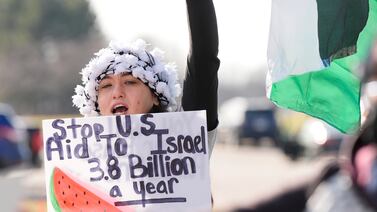There are two realities that must be confronted in any consideration of “What’s next for Gaza?” The first is that it would be naive and risky to put too much faith in this current ceasefire. The second is that failing to understand the true human toll of this war is dangerously insensitive – it’s far greater than the tens of thousands of Palestinians who have been killed and/or severely wounded by Israeli forces.
The pause in Israel’s bombing of Gaza is, undoubtedly, a welcome development. It has provided Palestinians relief, the opportunity to grieve, and for some, the chance to attempt to trek northward, assess the damage to their bombed-out neighbourhoods and dig through the rubble to find the bodies of missing family members. The pause has also allowed for a huge influx of food and aid supplies into Gaza and the passage of critically wounded Palestinians to Egypt for treatment.
This was the good news about the pause. The bad news is that the agreement is weak, with no enforcement mechanism. The original plan offered by former US President Joe Biden more than six months ago included three phases with the parties agreeing to all three from the outset.
We’re learning from the Israeli press that Israeli Prime Minister Benjamin Netanyahu has been assuring his supporters that he will only honour the first phase and will resume the bombing when it’s over. Reportedly, he may not withdraw Israeli forces from Gaza, nor allow Palestinian governance in Gaza that politically connects that area with the West Bank.
The administrations of Mr Biden and now US President Donald Trump have chosen to ignore Mr Netanyahu’s intentions to make a show of their “success”. Mr Biden had been providing support and cover for the Israeli leader from the beginning of the conflict. From October 2023 until leaving the White House, Mr Biden and his team supported Mr Netanyahu’s goals and gave him free rein.

Despite Mr Biden's insistence that he had been strenuously pursuing a ceasefire for half a year, there is clear evidence that the administration knew that Mr Netanyahu wouldn’t agree to a ceasefire and yet continued to publicly claim that Israel supported one and that Hamas was the major obstacle. The charade continues with this agreement because even though Mr Biden would have known the ceasefire is probably of limited duration, he took the “PR victory” before his term in office ended.
The pause provided much the same for Mr Trump – an early show of his ability to solve a problem that haunted his predecessor. That the ceasefire may not last more than a few months doesn’t appear to matter to the new US administration. What seems to count for Mr Trump is the show at the moment: a good photo-op and a boost in ratings. It doesn’t appear to matter to him if down the road the ceasefire doesn’t last; most Americans may have forgotten it by then.
It's very likely that neither this Israeli government or any of its possible successors, nor the Trump administration or any of its possible successors have any interest in a just solution to the conflict.
And so, even setting aside the matter of the ceasefire, despite plans afoot to lay out a path towards peace, starting with an interim government in Gaza, there doesn’t seem to be any real buy-in from the Israeli government. Nor will the US pressure Israel to take the steps needed to move peace forward.
There is another equally worrisome reality that is cause for concern: wars have consequences that last long after the bombs stop falling. Often unforeseen, the consequences can lay dormant for years like a virus before manifesting themselves. Because neither the Israeli leaders nor their American enablers have ever understood Palestinians’ humanity, they can’t fathom the long-term effect this disastrous war is having and will continue to have on its survivors.
The counts are staggering: more than 47,000 dead, 116,000 wounded, as many as 33,000 with permanent disabilities, an estimated 50,000 missing and unaccounted for, 90 per cent of the population (almost 1.9 million) forced to relocate with most of them now homeless because their previous residences have been destroyed, and 34,000 children orphaned with no surviving family members.
We are told that it may take two decades to clear the rubble and unexploded ordinance in Gaza and then years more to rebuild. But healing the wounds of war that will continue to plague the survivors will take much longer. The switch can be flipped to end the bombs, but the impact of this devastating war will continue to take its toll for more than another generation. There will be multiple types of psychological disorders such as trauma, anxiety, severe depression, and internalised violence leading to self-hurt or striking out at others.
Compounding this pain is the shock of seeing the rubble of their homes and the ruins of what their communities had once been. Over the decades that it will take to clear the destruction and rebuild their homes and lives, where are the Palestinians to go?
It’s not as if the Israeli government is likely to look with compassion on the survivors of their war. Palestinians fear with reason that if they leave what is left to them in Palestine, the Israeli forces may not let them return. Neither the US nor the Israeli officials are prepared to ensure the counselling and care needed to heal the wounds of this war will be available to the community of victims. The future is, therefore, uncertain, but leaning towards bleakness.
Live updates: Follow the latest on Israel-Gaza










